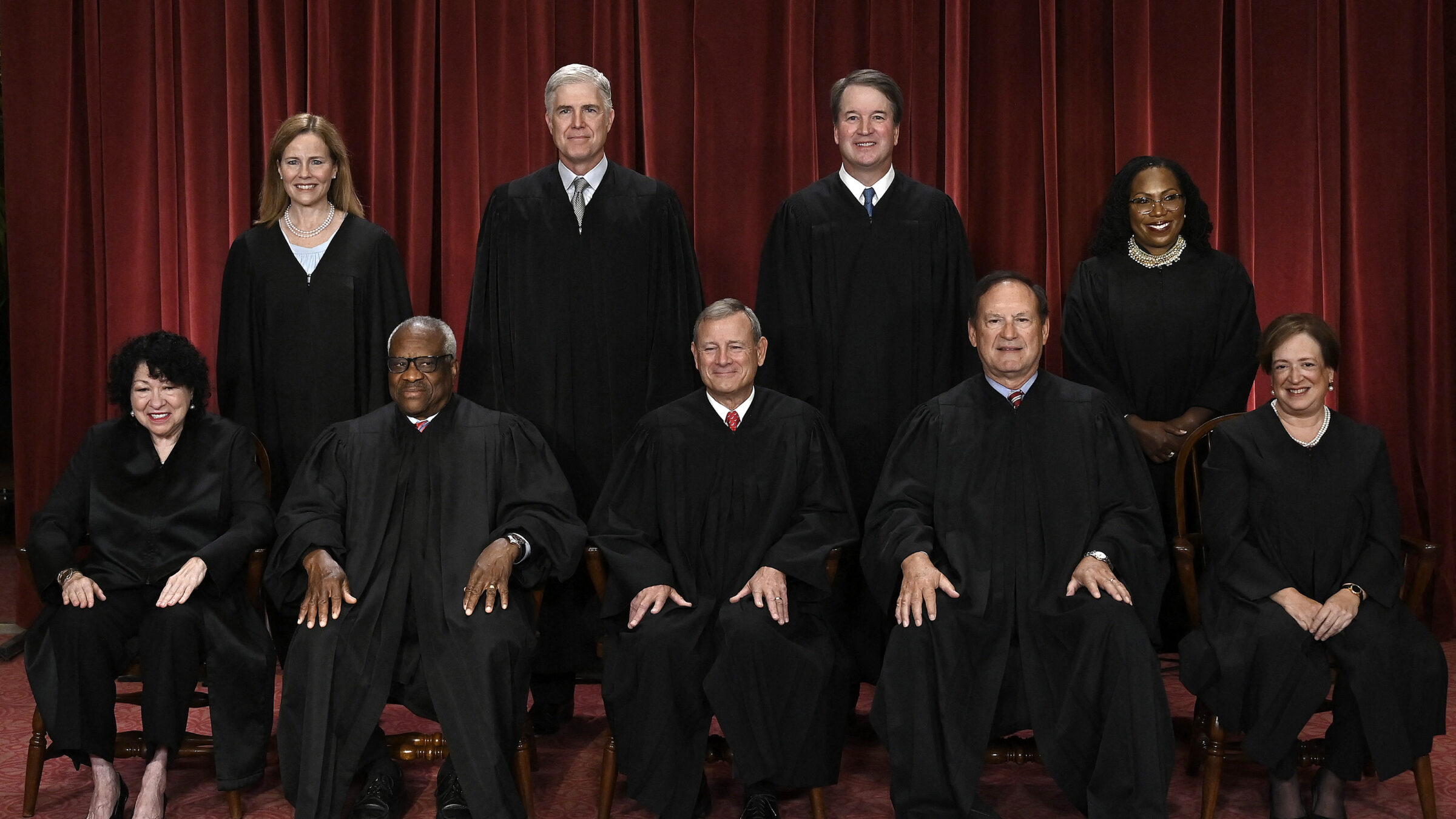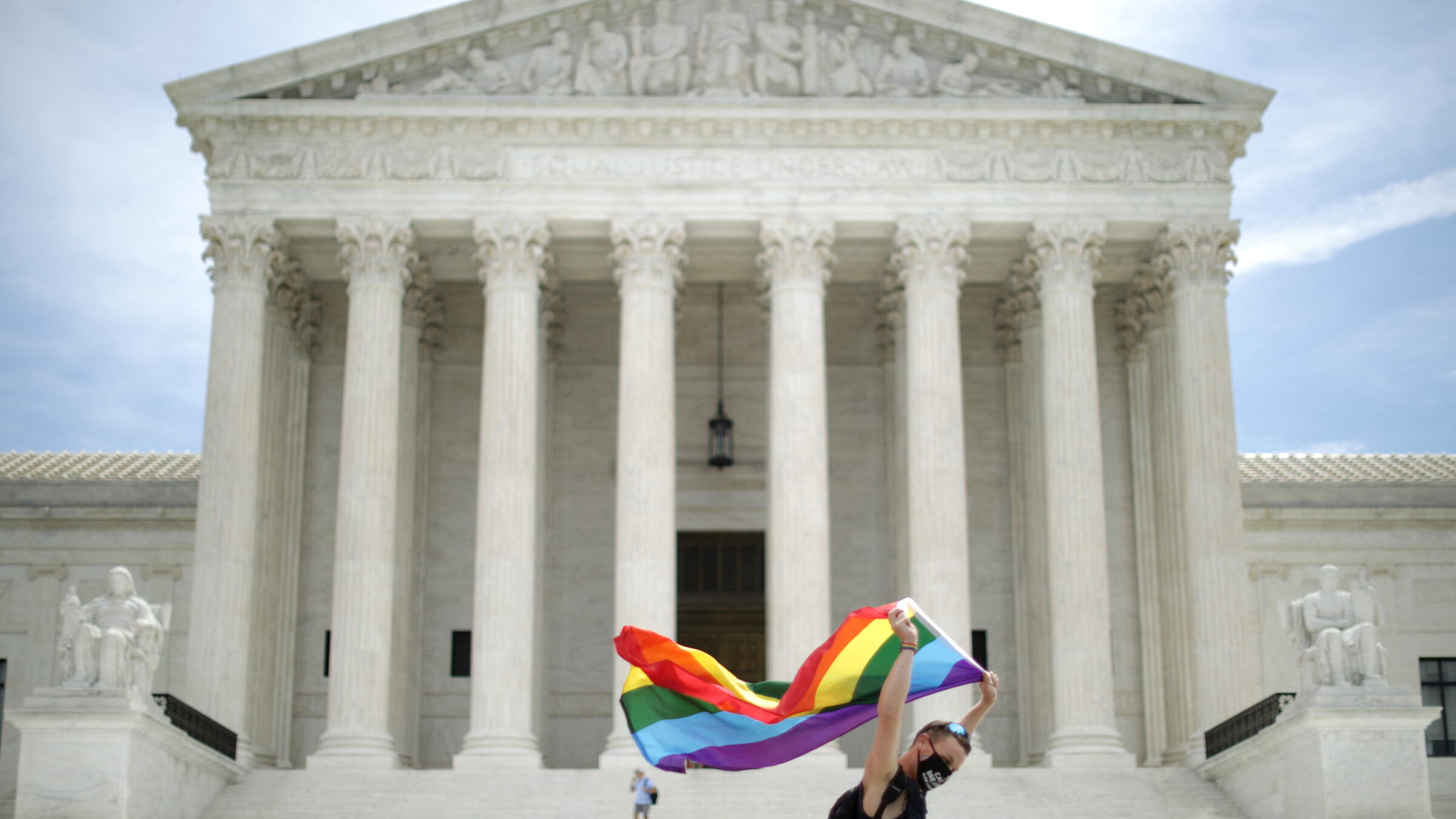Earlier this month, the Supreme Court agreed to hear Ames v. Ohio Department of Youth Services, a case alleging that a state juvenile corrections agency discriminated against one of its employees based on her sexual orientation. But the facts of this case are not like the facts of most employment discrimination lawsuits: Marlean Ames, the petitioner, is straight. She claims that her employer discriminated against her by giving the promotion she sought to an ostensibly less qualified gay woman, and then by demoting her and replacing her with an ostensibly less qualified gay man, too.
In recent decades, the conservative legal movement has worked diligently to reframe laws and policies intended to protect minority groups from discrimination as insidious tools of just-as-evil discrimination against majority groups—an All Lives Matter-style attack aimed at hollowing out the accomplishments of the Civil Rights Movement. The justices’ interest in a case like Ames is thus unsurprising: In the wake of the Court’s 2023 decision banning affirmative action at colleges and universities, conservative activists smell blood in the water now, and are flooding courtrooms with challenges to minority scholarship programs, corporate diversity initiatives, academic hiring practices, and the like.
Perhaps the loudest voice in this movement is longtime Trump advisor Stephen Miller, whose organization has filed dozens of “reverse discrimination” lawsuits on behalf of people who did not get a job and concluded that the woke agenda must be to blame. “America First Legal is leading the charge against racism targeting white straight men in America,” he proclaims here, displaying all the charisma of a wet ham.
Clip via YouTube
Ames, however, is not represented in this case by America First Legal. Nor is she represented by the Alliance Defending Freedom, or Students For Fair Admissions, or Jonathan Mitchell, or any of the Court’s other reactionary frequent fliers. Instead, representing her interests before the highest court in the land, for free, is the Supreme Court Litigation Clinic at the University of Virginia School of Law, and Xiao Wang, the liberal professor who leads the clinic. If the justices indeed use Ames to push the law in the direction Stephen Miller would prefer, he will have students and faculty at one of the nation’s most prestigious law schools to thank for their generous assistance.
Clinics, for readers who are unfamiliar, are law school courses that give students the chance to get some practical lawyering experience, which is otherwise in alarmingly short supply in legal education. Under a lawyer’s supervision, students might represent indigent defendants in criminal cases, for example, or immigrants applying for asylum. Traditionally, clinical practice has focused on public interest work, and state bar rules often limit clinics to representing low-income clients on a pro bono basis. Law schools are happy to play up this reputation, framing clinics as champions of the little guy, marshaling their considerable institutional resources to fight for underserved communities that the legal profession too often ignores.
In recent years, many law schools have expanded their clinical offerings beyond the more familiar, direct services-oriented models. About a dozen have launched specialty clinics that litigate high-stakes Supreme Court cases, typically on behalf of criminal defendants or civil plaintiffs who can’t pay Neal Katyal’s hourly rate. For students, who spend the academic year conducting research, combing through the record, and drafting briefs, these clinics can be pipelines to coveted jobs in government, academia, and private practice. For law school deans hoping to jump a few spots in the U.S. News rankings, an in-house Supreme Court clinic is a valuable tool for recruiting for students and faculty alike. Many clinics are affiliated with stars of the elite Supreme Court bar, who get to enjoy all the perks of teaching at a brand-name law school without having to put together a traditional syllabus.
Wang took over as director of UVA’s clinic last year. Since its founding in 2006, the clinic has been pretty successful relative to its peers: Ames is one of two of the clinic’s cases accepted by the Court this term, and Wang will likely argue both before the justices early next year.
Wang does not have the résumé of someone you might expect to see on the briefs in a reverse-discrimination case. His writing aligns with many progressive positions on courts and the law: In his scholarship, for example, Wang has discussed the fundamentally antidemocratic nature of the confirmations of Justices Neil Gorsuch and Brett Kavanaugh, and he’s argued in Al Jazeera that allowing states to ban abortion runs afoul of the United States’s treaty obligations under international law. Last year, he wrote about the political nature of federal judges’ decisions to take senior status for this very website.
“By ethics rules, we don’t represent Chiquita or IBM. We represent the people that Chiquita and IBM allegedly oppressed,” Wang said in 2023, pitching the clinic to interested students. “That’s a really powerful thing to get the chance to do in your third year of law school.” His Twitter bio includes the famous quote attributed to Justice Thurgood Marshall: “You do what you think is right and let the law catch up.”
The Court’s lurch to the right over the past half-decade, however, has made it challenging to simultaneously live one’s liberal values and run a bustling Supreme Court clinic. The justices reject about 98 percent of the cases appealed to them each year. In the hypercompetitive world of Supreme Court litigation, it can be tough to find work when the conservative supermajority that controls the docket is uninterested in the public-interest cases that clinics usually bring.
Thus, professors running these clinics have three basic choices. First, they can opt out. Exit opportunities for well-credentialed academics at top law schools are lucrative, prestigious, and plentiful. If you do not want to participate in the far-right counterrevolution in progress at the Supreme Court, you are under no obligation to bring cases before it.
Second, they can keep filing cert petitions on behalf of the little guy, understanding that a steady stream of rejections—and if they’re lucky, the occasional crushing defeat—is the best-case scenario. This is what happened at UVA two years ago, when the clinic’s previous director filed a cert petition on behalf of an incarcerated man challenging a rule in his circuit that prevented him from seeking habeas relief. This drew considerable criticism from practitioners and professors at the time, who argued that it was irresponsible to try a long-shot habeas case in a Court famous for its disdain for habeas petitioners. Sure enough, by 6-3 vote along ideological lines, the justices in Jones v. Hendrix ruled against the clinic’s client—and, in the process, wiped out a pro-habeas rule that had been good law throughout most of the country.
There is a third option: Liberals law professors can change their strategy, and start perusing the Federal Reporter for cases that do pique the justices’ interest. For clinics in search of work for their students, taking on a case like Ames confers a real competitive advantage: It is a safe bet that if Sam Alito sees a chance to water down civil rights law come across his desk, he is sliding that petition to the YES pile before he even finishes reading.
It is of course frustrating to watch conservative lawyers build successful careers by encouraging the Supreme Court to inflict harm on vulnerable people. It is even more disheartening to watch liberal lawyers do the same, ignoring the consequences for the people and values they care about.

(Photo by OLIVIER DOULIERY/AFP via Getty Images)
To understand how a clinic that represents “oppressed” people ends up on the wrong side of a straight rights case, you need to understand that the likelihood of a cert grant depends on more than just the justices’ interest in the policy issue. One of the most common reasons the Court grants cert is to resolve a “circuit split,” which happens when different appeals courts supply divergent answers to the same question. Supreme Court lawyers are renowned for their ability to hunt down circuit splits, and competition for such cases can be intense. If you can convince the justices that they have a responsibility to harmonize the law, you’re much likelier to persuade them that your case is worth their time.
Ames, Wang and his students say, is about a circuit split. The legal question is what people who bring “reverse discrimination” cases have to prove under a federal law known as Title VII, which prohibits discrimination in employment. Many courts of appeals require majority- or dominant-group plaintiffs who bring these cases—white people alleging race discrimination, men alleging sex discrimination, and so on—to come up with some evidence that the defendant is an “unusual employer” who discriminates against members of the majority group. The test acknowledges the reality that this sort of discrimination is, well, unusual; as one court put it, it “defies common sense to suggest that the promotion of a black employee justifies an inference of prejudice against white co-workers in our present society.”
Not all circuits use the “unusual employer” test, however. And in Ames, Wang and the clinic are asking the Court to get rid of it, which would make majority-group plaintiffs’ task easier going forward: To make their initial case, someone like Marlean Ames would simply have to show that they got rejected for a job for which they were qualified, which went to someone in a different demographic group. This result would not directly affect how minority plaintiffs make their Title VII cases. But it would lighten the legal burden for white guys who see a Black woman at the office, assume that reverse racism is the only explanation, and demand that the legal system right such a patently obvious injustice.
The UVA clinic knows its audience. The cert petition is full of citations to Bostock v. Clayton County, the 2020 case in which the Court, in an opinion written by Gorsuch, held that the plain text of Title VII bars sexual orientation-based discrimination; by the same logic, the clinic argues, imposing an “extratextual” unusual employer test deviates from what the law “actually says.” It reiterates the importance of enforcing a “categorical rule” of “individual equality,” and emphasizes that Title VII bars discrimination against “any group, minority or majority.” It quotes extensively from a concurring opinion below from Judge Raymond Kethledge, a Trump Supreme Court finalist who criticized the unusual employer test for imposing different “burdens on different plaintiffs based on their membership in demographic groups.” The test, Kethledge concluded, is not a “gloss on Title VII,” but a “deep scratch across its surface.”
Finally, the clinic argues that the unusual employer test is obsolete in light of “demographic change” in this country, since it can be “increasingly difficult to determine who belongs in the majority” in a given context. A person who is a minority “in one profession or geography,” the petition says, “could well be part of the majority group in another profession or geography.” This framing downplays the legacies of bigotry-fueled inequity that motivated Title VII’s passage, and adopts the conservative reimagination of invidious discrimination as a sort of soft, nebulous social ill that victimizes on an equal-opportunity basis.

(Photo by Chip Somodevilla/Getty Images)
Throughout the petition, Wang and the clinic talk about the case as a minor, technical corrective to an archaic legal quirk. The circuit split, they write, has created a “state of indecision and confusion” in lower courts that the justices should resolve, if for no other reason than to ensure the efficient, uniform administration of justice.
Lawyers are very good at framing their arguments to align with their personal beliefs and professional interests. But in this political climate, winning a Supreme Court decision that affirms the sanctity of straight rights would entail real-world consequences that go beyond resolving an obscure circuit split. It would force employers to account for the possibility that merely hiring a Black person will invite an expensive and embarrassing lawsuit, if their rejected applicants encounter clips of Stephen Miller yowling about discrimination against the white race. It would further empower a political movement aimed at fomenting fear and hate of LGBTQ people, a platform the Republican presidential nominee is campaigning on even as you read this sentence. It would reify the prevailing sentiment among conservatives, including sitting justices, that the subjugation of straight Christian men is the real crisis in American society that antidiscrimination law has yet to sufficiently address.
The conservative legal movement has ably demonstrated that there is no stopping point at which they will decide they’ve won enough. The fight to overturn Roe was ostensibly about returning abortion policy to the states, until the justices actually overturned Roe; now, it is about enacting a nationwide abortion ban as soon as Republicans have the votes. The effort to ban affirmative action was about fulfilling the Fourteenth Amendment’s supposed grand vision of a color-blind society, until the justices actually decided Students For Fair Admissions; now, it is about chasing people of color from positions of power until there are none left.
Any decision that undermines legal protections for LGBTQ people, no matter how “technical,” will have the same effect. It will invite more ambitious litigation from extremists who are eager to keep chipping away at civil rights law, and understand that conditions for doing so have never been friendlier.
The Court’s cert grant in Ames is good for everyone in the UVA clinic’s orbit. It is good for the law school, which gets to put out a triumphant press release celebrating the once-in-a-lifetime opportunities that await its most promising students. It is good for Wang’s students, who get to spend several months drafting a Supreme Court merits brief—and even more importantly, who get to note on clerkship applications that they spent several months drafting a Supreme Court merits brief. It is good for Wang, who gets to add another successful cert grant to the list on the clinic’s website.
It is bad for everyone else. Deciding to bring this case before this Court compromises the public service ethos of clinical legal education. It conscripts law students to fight right-wing culture wars, and furthers a cause that is already well-represented before the Court right now. It is work that any number of conservative legal organizations would gladly champion in this instance, if only the clinic had not volunteered first. If the justices’ recent history of deciding cases like this is any indication, the outcome will be the same no matter whose name is on the briefs.
No law professor has the power to stop the Court from pushing the law to the right. But all law professors, including Wang, have choices to make about how to do their jobs in a legal landscape dominated by a six-justice conservative supermajority. When staying busy requires dabbling in reactionary politics, even well-meaning liberals can feel the pressure to rationalize doing so. If this means accepting some risk that the Court will refashion Title VII into a weapon for aggrieved straight people to wield against LGBTQ coworkers they don’t like—well, these days, that’s just part of the cost of doing business.









